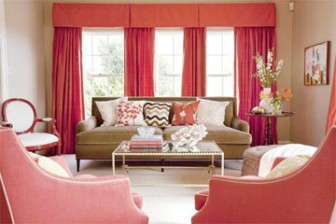Most people spend the largest amount of time in their living rooms. If entertaining or just being alone, the living room is the focus of life inside. When it comes to living room remodelling there are certain basic areas that need to be considered to ensure the room flows well together when completed.
A living room should be a good place to create memories.
All of your choices need to work together in your living room. You have certain elements you need to decide on like paint, flooring and furniture but whatever option you go with, the colours and style need to work with each other.
Do you like hardwood floors or carpet? If you are going to design your living room to be more formal, hardwood floors seem like a better option but if you have children and the living room is more of a fun room, then tiles or a thick carpet tend to make the most sense.
Once you have your flooring decided you need to look at your walls. Take into account all of the attributes of your walls to come up with the best plan. If you are painting, the walls and floor should complement each other. For example: a brown floor will go with cream walls for a muted effect. For a brighter effect, Indian Summer or orange would create an interesting mix.
With the walls and the floors looking to complement each other, the final piece of the puzzle is the furniture in your living room design. How much room you have will dictate how much or what kind of furniture best works in your living room. Plan out how you intend to use the room and pick your furniture accordingly.
A home’s living room area should be very inviting, even if the area is extremely formal. Any style of furniture will look friendly and inviting if plants, artwork and a few family photos are in the mix. Elegant sofas with more informal throw pillows work well, for example. Creating a living space that feels like real people spend lots of time there will impress visitors more than cold, formal furniture arrangements. By combining different styles and periods of furniture, a homeowner will create this effect more easily. Avoid the ‘furniture showroom’ look that requires no imagination.
 Measure the living room space, including entryways and closet areas. Transfer these dimensions to graph paper by scaling six inches of real space to one square. Cut out paper shapes to represent furniture so that various placements of furniture will be easy to imagine.
Measure the living room space, including entryways and closet areas. Transfer these dimensions to graph paper by scaling six inches of real space to one square. Cut out paper shapes to represent furniture so that various placements of furniture will be easy to imagine.
Start with the sofa area. Place a sofa to face a view or area of interest. Plan to instal it to look toward a window space with a nice view, for example. Position the sofa to face a wall designated for a TV or a grouping of family photos. Use two sofas facing each other, if the room will be set aside for conversation and visiting with friends. Build the living room around the position of the sofa, since this space should be the heart of the room.
Add chairs to the sofa space. Plan to purchase side chairs that flank the sofa, so the grouping all faces a coffee table, for example. Experiment with various placement of side chairs, so that every option is considered. Don’t necessarily buy pricey or over-sized chairs, but do plan to purchase chairs that are extremely comfortable, durable and well-proportioned to the size of the sofa.
Mix styles and periods of furniture. Use a dark brown sofa with burgundy winged-back chairs, for example. Place a grandmother’s antique table at the back of a white leather sofa, or use a walnut bookcase from the 1940s with a furniture grouping that looks high tech. Arrange a living room by adding just one piece at a time to an empty room. Invest in good quality curtains that complement the main things in the room – floor, walls and sofa/suite – and will last for a while.
Decide where you would hang paintings to finish the room.
 Use lamps and artwork to create a finished look. Buy lamps and prints that are the right size for other furnishings. The proportions of accent pieces to sofas, chairs and tables will give the room the correct balance. Colours and accessories chosen are always a matter of personal taste. Buy what’s visually appealing but appropriate for your family.
Use lamps and artwork to create a finished look. Buy lamps and prints that are the right size for other furnishings. The proportions of accent pieces to sofas, chairs and tables will give the room the correct balance. Colours and accessories chosen are always a matter of personal taste. Buy what’s visually appealing but appropriate for your family.
Finally, don’t forget the little accessories that finish off a room. Be sure to select window treatments for your living room  that compliment your style. Doors – both hinges and handles – should flow with the colours in the room. Adding candles and flowers help to make the room feel more like home. (eHow)
that compliment your style. Doors – both hinges and handles – should flow with the colours in the room. Adding candles and flowers help to make the room feel more like home. (eHow)











